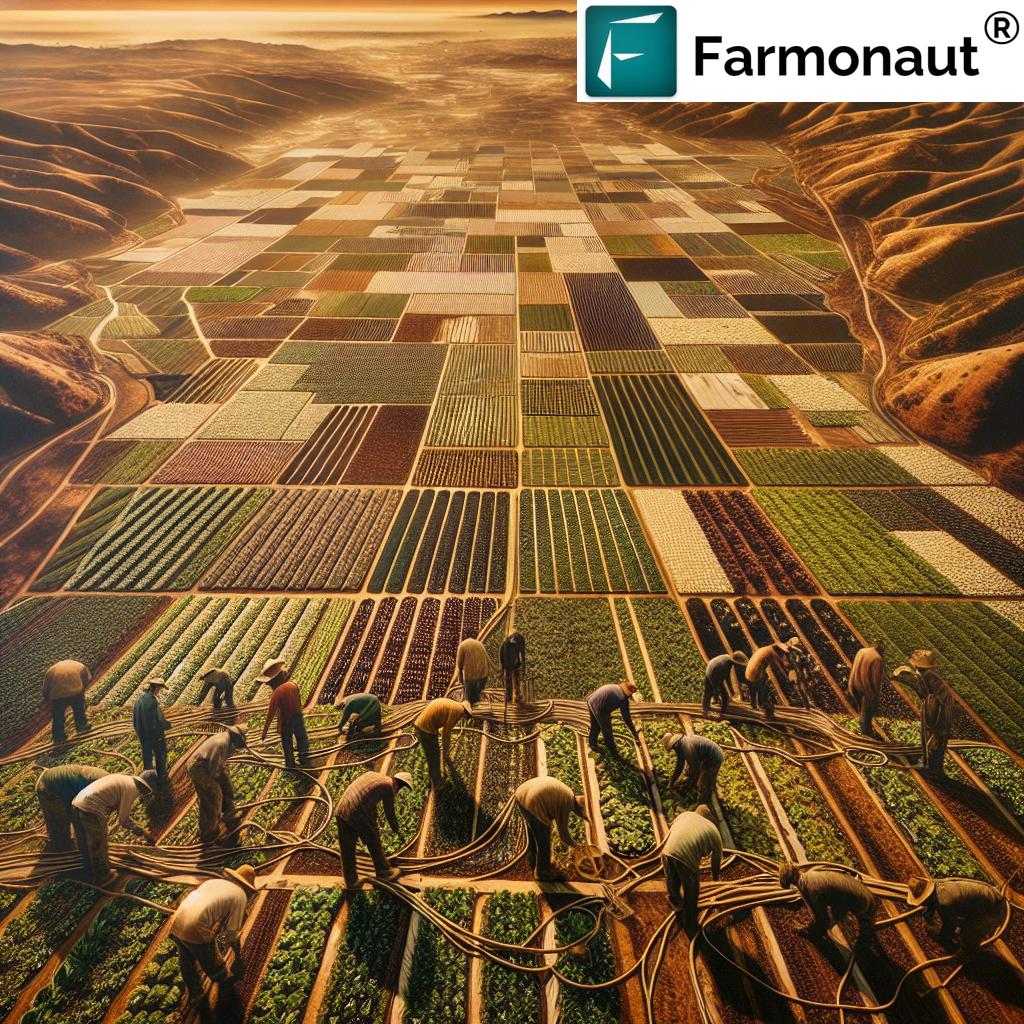Did Native Americans Have Irrigation Systems? Drone & AI – Evolution of Irrigation from Ancestral Ingenuity to Cutting-Edge Technology
“By 1000 AD, Native American Hohokam built 500+ miles of irrigation canals in the American Southwest.”
Introduction: The Cornerstone of Agriculture
Irrigation has always been the backbone of agricultural societies, enabling us to sustain crops and nurture vibrant communities even in the harshest, most diverse environments. Throughout history, the evolution of irrigation systems—from ancient canals to AI-powered drones—reveals our ingenuity in conquering environmental constraints for food security.
This article asks: Did Native Americans have irrigation systems? The answer is an emphatic yes, with Native ingenuity laying a foundation for the digital, drone, and AI-based irrigation revolutions now optimizing water management and crop yields in 2025 and beyond. Let’s trace this journey—across centuries, across cultures, and across technologies.
Native American Irrigation Systems: Early Innovation & Ingenuity
Long before the advent of digital technologies, Native American communities developed sophisticated irrigation methods tailored to their local environmental conditions. Understanding water as the essential resource, these indigenous societies mastered canal building, river diversion, and runoff management, particularly in the arid and semi-arid regions of present-day North America.
The Hohokam of Arizona: Canal Engineering Marvels
In the hot, dry valleys of what is now Arizona, the Hohokam people engineered over 500 miles of canals by 1000 AD. Utilizing a deep understanding of hydrology and their landscape, they created extensive networks that could divert river water across arid desert lands, sustaining crops like maize, beans, and squash.
- Canals spanning tens of kilometers exemplified advanced water management strategies
- Structured for gravity-flow, reducing labor and maximizing efficiency
- Supported large agricultural communities, giving rise to one of North America’s most populous pre-Columbian societies
Pueblo Peoples: Sustainability in Semi-Arid Regions
Similarly, the Pueblo peoples of the Southwest developed intricate check dams, terraces, and diversion channels to harvest runoff efficiently. These innovations emphasized:
- Capturing scarce rains and channeling water to fields
- Preventing erosion & maximizing moisture retention in soil
- Enhancing food security in challenging ecosystems
Techniques and Legacy
- Check Dams: Small stone barriers built in washes and arroyos, slowing water to allow sedimentation and absorption
- Terracing: Slope-reshaping to limit runoff, distribute water more evenly, and maximize retention
- Diversion Channels: Redirected water from seasonal flows to cropped areas
These methods highlight an intrinsic understanding of water cycles and ecosystem health, ensuring farmed fields could efficiently produce maize, beans, and squash, typically called the “Three Sisters” of Native American agriculture.
“Modern AI and drones analyze satellite data from over 900,000 U.S. farms to optimize precise irrigation.”
Comparative Evolution Table: Irrigation Methods Over Time
| Irrigation System | Time Period | Primary Technology | Water Efficiency (%) | Labor Requirement (hrs/acre) | Crop Yield Improvement (%) | Environmental Impact | Sustainability |
|---|---|---|---|---|---|---|---|
| Native American Irrigation | ~300 to 1500 AD | Gravity-fed Canals, Check Dams, Terracing |
55-65% | 8-12 | 10-25% | Low – adapts to local ecology, prevents soil erosion |
High – tailored for ecosystem balance and water conservation |
| Early Modern Irrigation | 1800s–1990s | Flood/Furrow, Sprinkler, Pumps | 45-70% | 12-20 | 20-35% | Moderate – higher risk of leaching, runoff, water waste | Moderate – improved yields but resource intensive |
| AI/Drone Irrigation | 2015–2025 & Beyond | Satellite Sensors, Drones, Smart Valves, AI Algorithms |
85-95% | 2-5 | 35-55% | Minimal – precise application reduces runoff & chemical use | Very High – integrates conservation, adaptation, automation |
Adapting to Environmental and Agricultural Challenges
The brilliance of indigenous and Native American irrigation systems lies in how they responded to environmental constraints and diverse conditions. They efficiently used locally available resources—stones, soils, contours, seasonal water flows—emphasizing sustainable practices long before “sustainability” became a buzzword.
- Conserving scarce water in low-rainfall regions
- Preventing erosion and maximizing moisture retention for crop resilience
- Ensuring food security through redundancy and adaptation
- Balancing needs of communities with ecosystem health
- Minimizing disruption to the local landscape and native flora/fauna
These practices highlight a near-universal principle in agriculture: the closest you work with nature, the more sustainable your results. This wisdom guides contemporary developments in drone and AI-based irrigation systems as we strive for sustainable use of resources to address climate change and population growth.
Transition to Modern Irrigation Technologies
With the global population surging, growing demands for food, and climate pressures mounting, agricultural irrigation methods began to evolve quickly:
- Flood irrigation and sprinkler systems mechanized water delivery, making farming more efficient but sometimes increasing resource waste
- Development of pumps, pipes, and mechanical solutions allowed farming on larger scales but raised water management challenges
- Recent decades: modern digital technology—satellites, drones, IoT, AI—ushered in precise, data-driven, and resource-efficient irrigation systems
Optimization and Constraints in “Modern” Irrigation
While early modern methods increased yields and access to water, challenges persisted:
- Runoff and leaching due to poor targeting
- Overuse causing water table depletion, salinization, and environmental degradation
- The need for smarter, real-time management solutions
This context motivated the paradigm shift to precision, digital, and AI-based irrigation approaches visible in 2025 and beyond.
Drone Irrigation System: Precision Farming in the Sky
The Emergence of Drones in Water Management
Drones have rapidly moved from aerial photography toward direct irrigation and management roles in agriculture. A 2025 drone irrigation system utilizes:
- Multispectral sensors to assess soil moisture, plant health, and stress in crops
- AI-driven analysis to map irrigation needs—zone by zone, plant by plant
- Direct water application systems for remote or patchy fields, unreachable with traditional pipelines
Benefits of Drone-Powered Irrigation
- Reduced labor hours—automate tasks, freeing up resources
- Higher water efficiency—target only stressed or dry spots
- Minimal nutrient runoff and soil degradation—preventing the problems caused by excessive irrigation
- Adaptability to changing field conditions
With drones, farmers in 2025 enable precise application and near-real-time response, revolutionizing water use and sustainability—the very challenges Native American tribes mastered at smaller scales with traditional irrigation systems.
Malawi Irrigation Tech 2025: Solar-Pump Secrets & Yields
Real-world examples abound of drone, solar, and AI-based irrigation boosting yields and food security. For instance, African regions now utilize solar-powered pumps—see “Malawi Irrigation Tech 2025 | 3 Solar-Pump Secrets That Triple Yields in Mzimba”—showing how technologies are adapted globally for sustainable and efficient irrigation practices.
AI Based Irrigation System:
Data-Driven Decisions in the Field
The leap towards AI based irrigation systems has fundamentally shifted how irrigation is managed:
- AI analyzes millions of data points—from sensors, satellite imagery, field-level soil moisture to weather forecasts
- Real-time data directly feeds into smart valves, pumps, and drone irrigation system controls
- Machine-learning algorithms optimize irrigation schedules and water volumes based on crop needs, soil types, and climate conditions
- Predictive analytics alert farmers to impending droughts, heavy rainfall, or pest outbreaks—enabling rapid response
2025’s landscape: AI-driven systems reduce human error and conserve resources, allowing farmers to achieve optimal yields and earn better returns even as climate becomes unpredictable.
Integration with IoT and Sensors
- Continuous field monitoring ensures dynamic, real-time responses to weather and field changes
- Remote access via web and apps empowers rapid adjustments
- Greater transparency and traceability with connection to blockchain and satellite data
Satellites, AI, and Water Management in Precision Farming
As AI-based irrigation systems grow, so do satellite technologies for field-level crop, soil, and water management. Leading solutions, like those delivered by Farmonaut, empower users through real-time, affordable satellite monitoring of NDVI for vegetation health, NDWI for water stress, and more.
Integrating Satellite, Drone & AI for Advanced Agriculture
In the context of 2025 and the challenges posed by climate change and resource scarcity, a holistic approach emerges:
- Satellites map fields, analyze soil and vegetation, and gather weather and environmental data
- Drone irrigation systems survey fields for stress and apply water precisely
- AI integrates all inputs and optimizes schedules, reducing labor and improving resource allocation
Our large-scale farm management solutions empower commercial farming operations to utilize real-time, satellite-driven cropping, irrigation, and resource management from any device, any time.
Empowering Future-Ready Agriculture with Farmonaut
We at Farmonaut enable farmers, businesses, and governments worldwide to harness the full potential of satellite and AI-based irrigation systems—democratizing a technology that was once accessible only at great expense.
- Our satellite-based monitoring delivers insights into vegetation health, soil moisture, and structural status for optimizing resource management and maximizing yields.
- With our crop loan and insurance verification tools, we streamline financing while reducing fraud and risk, making agriculture safer for farmers and institutions.
- Our fleet management system, detailed here, lets agribusinesses reduce costs and boost safety by gaining real-time visibility on all machinery and vehicles.
- Through carbon footprinting and traceability, users achieve transparent, sustainable supply chains across agriculture and mining, fostering trust from farm to consumer.
Leveraging our API (API documentation here), developers and businesses can build tailored solutions—for irrigation, crop and forest advice, environmental monitoring, and beyond.



JEEVN AI: Smart, Satellite-Driven Farming
Through the JEEVN AI advisory system, we deliver real-time insights and strategies for farmers and agri-businesses—combining satellite, weather, and ground data to optimize everything from irrigation to planting times and fleet use.
Sustainability, Food Security & Environmental Impacts
The journey from Native American irrigation systems to AI-driven, drone-based irrigation exemplifies the evolution of sustainable practices:
- Water use is minimized, preventing over-withdrawal and ensuring community resilience
- Runoff and chemical leaching are reduced, helping preserve surrounding ecosystems
- Crop yields increase even in unpredictable climates
- Labor and resource management is streamlined, empowering agricultural communities to adapt to future challenges
- Blockchain traceability and transparency solutions further ensure accountability across the supply chain
What’s Next for Future Agriculture?
- Integration of advanced blockchain and AI tools for end-to-end resource and environmental management
- Expansion of satellite-driven crop advisory and forest plantation advisory for maximizing reforestation and carbon sequestration
- Global accessibility to digital, AI, and drone irrigation systems—from smallholders to large-scale farming
FAQ: Did Native Americans Have Irrigation Systems
& 2025 Innovations
Did Native Americans really build large irrigation systems?
Yes. Native Americans, especially the Hohokam in Arizona, engineered extensive canals stretching over 500 miles, serving communities and farms long before European contact.
How is modern irrigation different from ancient systems?
Today’s irrigation uses satellite data, drones, and AI algorithms for precise, real-time water management, massively reducing waste and improving yields. Ancient systems relied on local knowledge, manual labor, and adaptation to environmental features.
Why are drone and AI-based irrigation systems popular in 2025?
Because they integrate digital data, field mapping, and predictive analytics to deliver water only where it’s needed—saving water, time, labor, and improving resilience in a changing climate.
What role does Farmonaut play in irrigation management?
We at Farmonaut provide affordable, real-time satellite and AI-driven insights for crop, soil, and water management via web, Android, iOS apps, and API, empowering users at all scales of agriculture.
How can I start using advanced irrigation monitoring?
You can begin with our Farmonaut web or mobile apps for satellite-guided farm insights and connect via API for integrated solutions, or consult the developer docs here for custom implementations.
Are these technologies sustainable?
Absolutely—satellite, AI, and drone solutions drastically reduce water use, optimize input applications, minimize environmental impact, and ensure productivity even in changing climates.
Conclusion: Bridging Heritage and Technology
Did Native Americans have irrigation systems? Their early innovations and sustainable practices laid the foundation for modern, technology-driven solutions in irrigation. From the ancient canals of Hohokam Arizona to 2025’s AI-based and drone-powered systems, we witness an evolution—where core principles remain, but the tools and scale have transformed.
As population growth, climate change, and food security challenges persist, integrating time-tested indigenous knowledge with digital, AI, and satellite innovations is not just wise—it is necessary. With tools from companies like Farmonaut, we are better equipped than ever to steward our resources, enhance yields, and ensure a sustainable, secure agricultural future for all.









